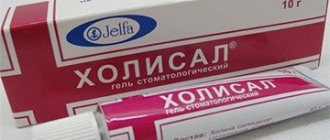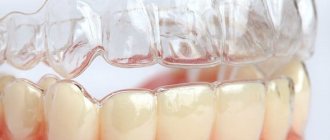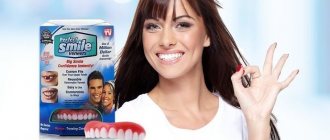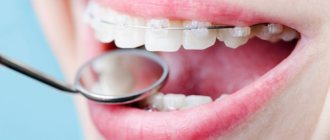Why do you need a boxing mouth guard?
Boxing mouthguard - accurately follows the shape of the jaw and protects the oral cavity during a fight. A dental insert is a mandatory element of sports equipment. Without protection, a fighter will not be allowed into the ring.
Why is the plate needed? 1. Protects teeth from knocking out and chipping. 2. Protects the oral cavity from internal cuts. If there is no mouthguard, then the lips and cheeks are torn from the impact of the fangs and sharp edges of the teeth. 3. Prevents tongue biting during impact. 4. Covers gums from cuts. 5. Protects the jaw from dislocations and fractures. 6. Reduces the risk of concussion.
Characteristics of a quality mouth guard
An ideal mouth guard should meet the following requirements:
- Stay securely on teeth;
- Do not interfere with the bite;
- Do not cause discomfort (not felt in the oral cavity);
- Allow you to breathe and talk freely;
- Do not have toxic odors (there are mouth guards with fragrance);
- Comply with the specifics of the sport;
- Have a light color (damage is better visible, and red is prohibited by the competition rules).
The optimal thickness for the front side is 3-4 mm, the bottom side is 3 mm, and on the palate side is 2 mm.
Types of boxing guards
The sports industry offers various types of boxing mouthguards. The characteristics can indicate everything from color to type of flavoring. In order not to get confused in this diversity, we will use the classical classification. Let us highlight three main features: type of protection, material, thickness.
Type of protection (purpose)
Based on the type of protection, the plates are divided into two types.
1. Double-sided mouthguard. The protection covers both jaws. This option is recommended for beginners and for training sparring. The peculiarity of the plate is that it must be compressed by two jaws. This makes mouth breathing difficult. Therefore, professionals prefer single-jaw onlays.
2. Single-sided mouthguard. The plate sits tightly on the upper jaw. Doesn't fall out when you open your mouth. Doesn't make breathing difficult. This liner does not cover the lower jaw. Teeth protection is provided by high-tech materials and a special design of the mouth guard.
Type of material
All materials for boxing mouth guards are divided into two groups: thermoplastic and cast (non-thermoplastic). Among thermoplastic protectors, there is a separate type – dental ones.
Molded pads
Sold ready-made. Take it out of the box and put it on your jaw. Convenient, but impractical. It is difficult to select a cast plate taking into account individual characteristics. If the liner dangles, then you can’t count on good protection.
Thermoplastic mouth guards
Thermoplastic material is a semi-finished product. The new mouthguard is heated and “put on the teeth.” The plate cools and takes the exact shape of the jaw.
The anatomical precision of the pad guarantees reliable protection during combat. We will tell you below how to “cook” and put on a mouth guard correctly.
Dental protectors
An individual cast is made of both jaws of the athlete.
Contact a sports dentist. Making a plaster cast. Then, on a special machine, your personal protection is pressed.
The service is not cheap. For a professional boxer, this is not only protection, but also a way to express his extravagance. You can order any color and make a threatening inscription.
Overlay thickness
The thickness of the protective plate depends on the number of layers. Boxing mouthguards are produced in single-layer and multi-layer.
Single layer plates
A single layer plate will provide one level of protection. When choosing such a mouthguard, pay attention to the height of the front side. The front (outer) wall should be high. The high side solves two issues at once.
The first is to protect the gums. Secondly, it redistributes the shock load. I'll say it in other words. Removes part of the shock wave from the front teeth and directs it to the entire gum and palate.
Multi-layer protection
A double-layer mouthguard is the choice of most boxers. Two layers provide double protection.
The outer layer, more rigid, is made of rubber (rubber). Its task is to absorb and “dissipate” the force of the blow.
The inner layer, soft, consists of gel. It does two things. Firstly, it perfectly follows the shape of the jaw and teeth. Secondly, it provides shock absorption during an impact.
Some manufacturers offer three-layer models. The structure is strengthened by special inserts for the outer frame. The inner layer has shock-absorbing cushions.
Dental mouth guard: single-sided or double-sided?
“Which mouthguard to choose” is one of the most common questions we hear from clients in our work. We strongly recommend choosing a single-sided mouthguard that is designed for the upper jaw.
In principle, in our store the vast majority of the assortment consists of just such mouth guards. We wouldn't recommend them 
Why is this so? Double protective protectors are very inconvenient. When used during exercise, you must constantly clench your teeth to prevent the mouthguard from falling out. This makes breathing much more difficult and forces you to constantly pay attention to your breathing. Although double-sided mouthguards are equipped with holes in the middle, they are often not enough for athletes to breathe effortlessly.
We can recommend that you buy only proven products from reputable manufacturers, such as the previously mentioned Shock Doctor mouthguards or from Venum. These companies produce high quality gels. During their use, the jaw is clamped so that the lower teeth are hidden and their damage in this type of mouthguard tends to zero.
Currently, leading companies have stopped producing double mouthguards, because single ones do their job perfectly. If you still want maximum dental protection, then your choice is a thick mouth guard such as Shock Doctor Gel Max. You can rest assured that your teeth will be the safest with it.
The best manufacturers of mouth guards for boxing and MMA
There are many companies that make mouthguards for contact sports. But there are brands that are among the best, in any rating.
SHOCK DOCTOR
American brand Shock Doctor, a leader among manufacturers of protective equipment. They specialize in the production of boxing mouth guards from high-tech gel. Even inexpensive models have a three-layer construction.
Manufacturers claim that thanks to high technology, the mouth guard absorbs 40% of impact energy. That's why they produce models with low sides . The protector provides reliable protection to both jaws and does not interfere with conversation.
The manufacturer is so confident in its product that it guarantees compensation of up to 15 thousand dollars to anyone who loses a tooth while using the onlay.
VENUM
The company specializes in the production of protective equipment for professionals. The brand was founded in 2006. The central office is located in Brazil.
The founders of Venum know first-hand what it's like to miss a beat. The origins of the brand are Brazilian jiu-jitsu fighters. The company was created specifically for the production of sports equipment.
Manufacturers Venum maintain close relationships with UFC stars. The best fighters of the Cell are involved in the development of new defense models.
OPRO
The English brand was founded in 1997. The company is a licensed partner of the UFC. This fact says a lot. You can trust such protection.
In addition, all OPRO models have an antibacterial coating. The package includes an antimicrobial box. In 2007, Opro received the Queen's Award for Innovation in Oral Protection.
EVERLAST
The brand was founded in 1910 in the USA. Specializes in the production of sportswear and protective equipment for martial arts.
The campaign's products are chosen by world-famous stars. Muhammad Ali, Mike Tyson and many other boxing geniuses performed in EVERLAST equipment.
Over a hundred years, the company has accumulated vast experience in the development of security elements and has its own patented technologies. For example, boxing gloves contain “EverGEL” - a special gel, the composition of which is kept secret. It protects your wrists by cushioning and dissipating impact energy. The same technologies are used in boxing mouth guards.
To make the famous brand available to the masses, production was moved to China. Affordable prices, plus modern technologies. Summarize and you will understand why Everlast mouthguards are known in all boxing schools.
What materials are the protection plates made from?
Every athlete sooner or later faces the question: “What material is better to buy a mouth guard from?”
- The most inexpensive are mouthguards made of latex or rubber. As a rule, cast plates are made from this material. Professional athletes do not use such mouthguards due to their inability to reliably protect against serious injuries.
- The average price option is plates made of silicone. They are boiled, and therefore are able to take into account the anatomical features of the athlete’s jaw. These mouthguards are used by mid-level fighters.
- Mouthguards for professional athletes are made from gel-like materials. This material allows you to accurately copy the shape of the athlete’s jaw, and during the fight it provides a high degree of protection.
It is also worth noting that a number of requirements are imposed on the mouth guards of professional fighters. If the plates used by the athlete are not able to provide the fighter with a certain level of protection, then the athlete is simply not allowed to compete.
Which mouthguard to choose
When choosing a boxing mouth guard, remember how much a visit to the dentist costs. “Repairing” one tooth will cost more than a good insert.
Production leaders refused to produce double-sided protectors (for both jaws). Therefore, we will not consider them.
Single-sided plates, as you now know, come in one-, two- and three-layer types. Prices for single-layer protectors start from 300 rubles. A good two-layer Everlast mouthguard costs around 1000.
Need recommendations from MMA fighters - choose Venum . The defense was created by fighters based on personal experience. With such a boxing mouth guard you can go into the ring. A reliable two-layer plate will cost 1500-2000 rubles.
If you want a bright design and a fragrant smell from British aristocrats, add another five hundred. The Opro catalog can be viewed here .
The undisputed favorite remains the brand - Shock Doctor . Three-layer protection, a wide price range, warranty obligations - this is the number one policy.
Choosing protection for a child
A children's mouthguard differs from an adult's only in size. Manufacturers produce two types of earbuds.
Children's – up to 10 years old, for a child under 140 cm tall. Adult – over 10 years old, for an athlete taller than 140 centimeters.
An “adult” mouthguard is easy to adjust to size. After “trying on”, trim the ends of the plate with a knife or blade. If necessary, the protector can be “cooked” again.
OPRO specially produces models for beginner athletes.
If a child has braces, they purchase a specialized mouthguard. It’s called “for braces.”
“Cooking” of the protective lining
If you choose a thermoplastic boxing mouth guard, the instructions will explain in detail how to fit it to your teeth. But, in principle, they are all processed the same way.
- Water is boiled in a sufficient volume so that the plate can freely fit there.
- Place the mouth guard in boiling water for a maximum of half a minute.
- When the removed pad has cooled enough to not leave burns, but has not yet cooled completely, it is inserted into the place of the future “work” and clamped tightly. The outer edge rolls over the gums with ease for the person who will wear the mouthguard.
There are only 20 seconds to do everything. If the manipulations are done deftly, and the boxing mouthguard turns out to be of high quality, then when you unclench your teeth it will not fall off.
How to “cook” a boxing mouthguard, instructions (video)
In fact, there is no need to cook the kapa. The workpiece is immersed in hot water (80-90° C) for 30-60 seconds. The exact time and water temperature are indicated in the instructions.
Then the plate is taken out, shaken (or dipped in cold water for 1 second) and put on the teeth.
The plate is pressed on the teeth with your fingers. The insert must be pulled over the gum and pressed tightly against the teeth.
After the protector is placed on the upper jaw, you need to close your teeth and bite down. There is no need to clench your teeth too hard to avoid biting through the protector.
The last step is to immerse the liner in cold water.
To reinforce the information, watch the video. It's easier to see once than to read twice.
Rules for preparing dental inserts
For a mouthguard to protect properly, it is not enough to choose it correctly. The dental insert must be properly prepared for further use. It is recommended to boil the mouth guard before use. This is necessary so that the dental onlay takes the anatomical shape of the athlete’s jaw.
The instructions for preparing the mouthguard are as follows:
- Boil water in a small container without the dental insert.
- Immerse the mouthguard in boiling water for 20-30 seconds.
- Rinse your mouth with cold water and press the pad you just removed from the boiling water between your teeth for 3-5 minutes.
- After the required time has passed, briefly immerse the tray in cold water.
After a few minutes, remove the pad from the water. The mouthguard must mold to the exact shape of the athlete's jaw, like a dental cast. If the desired result is not achieved, the procedure can be repeated.
On some mouth guards, to facilitate the preparation procedure, manufacturers indicate the exact time of heat treatment. In this case, the presented framework must be strictly adhered to so as not to spoil the structure of the material from which the dental insert was made.
In order for the mouthguard to last as long as possible, it must be stored in a special case with an antibacterial coating. After each use of the dental veneer, it is recommended to brush it with a small amount of toothpaste and rinse thoroughly with cold water. It is recommended to replace a torn or deformed mouthguard immediately. A damaged pad is no longer able to perform the necessary protective functions and can cause irreparable harm to the athlete with further use.
MMA gloves
Kinds
The first type is training. They resemble a lightweight version of boxing gloves. The weight goes up to 3-4 ounces. The gloves themselves are closed. The second type is combat. They are lighter than training gloves, thinner, and the impact from them is stronger and more painful. Available with closed or open thumb.
Weight and size
Determined based on the weight of the athlete. Up to 75 kg choose S or M, over 75 kg - L and XL. If you cannot determine by weight, choose by the volume of your palm. Backlash is only possible if the athlete is going to bandage his hand tightly.
| Size | S | M | L | XL |
| Palm circumference | 15-18 cm | 18-20 cm | 21-23 cm | 23-25 cm |
Material
Made from genuine leather or leatherette. The first option is more expensive. However, it lasts longer. The gloves are filled with gel. There are manufacturers who use special materials with an antibacterial effect to extend the life of the product.
- Care. MMA gloves do not like moisture and high temperatures. So avoid both. You can buy a special insert for drying or stuff your gloves with newspaper after training.
How long do you wear mouthguards after braces?
The most common question that patients ask their orthodontist is how long to wear mouth guards after removing braces. For each person, the wearing period is individual and determined by the doctor. For some, a year is enough to fix the bite; for others, it takes more than two years. If you want to roughly calculate how long you need to wear mouthguards after braces, you can use this conditional formula.
Take as a basis the time during which you wore the braces system and double it. This will be the approximate period of wearing the mouthguard. Many people wear it for two to four years. But there are also people whose muscle memory “refuses to remember” the new position of the jaw; the process of fixing the bite is very slow. In this case, you may need to wear a mouth guard for a longer period, sometimes for life.
What can be corrected with a mouthguard?
The method of correcting bite with mouth guards allows you to solve the problem of such pathologies in the development of teeth as:
- too close arrangement or presence of large gaps between the teeth;
- cross bites with minor deviations;
- a tooth (or several) is located lower or higher than the others, thereby disturbing the bite;
- slight displacements to the side or relative to its own axis;
- incorrect bite due to loss of teeth, when neighboring ones begin to shift, filling the resulting space;
- broken bite due to injury in the dental system.
We suggest you read: How to correctly position an x-ray
Mouthguards are also often used to correct the bite in children, when the baby and permanent teeth erupt incorrectly, or if the pathology formed during intrauterine development.
Cleaning steps
The orthodontic mouthguard should be cleaned with a separate brush in the morning and evening, and oral care should preferably be carried out after each meal.
Various means are suitable for cleaning the product; below we will consider them in detail.
To deeply clean the mouth guard, you can use a soap solution. It is prepared using antibacterial hand soap or dishwashing gel. The hygiene procedure consists of several stages:
- lower the product into the soap mixture;
- moisten the brush and clean the outer and inner surfaces of the mouthguard with smooth circular movements;
- At the end of the procedure, rinse the dental veneer under running warm water and allow to dry naturally.
We suggest you read: Small white pimple under the tongue
Tablets for the care of prosthetic structures will help eliminate bacteria and dirt from the surface of the correction device. Procedure algorithm:
- fill the container with cold water;
- dissolve 1 tablet in it;
- place the mouth guard in the resulting solution and leave for 10-15 minutes;
- rinse the pad well and store in a case;
- Before use, rinse again with water.
Important! It is forbidden to leave the mouth guard in the solution overnight. Aggressive cleaning agents can damage the product.
Bleach
Allergy tests should be performed before using bleach. To do this, moisten a cotton swab in the prepared composition and treat the back of the hand. If there is no redness or other inflammatory reactions, the solution can be used.
To avoid chemical burns to soft tissues, cleansing is performed with gloves.
Stages of manipulation:
- dilute 1 portion of bleach with 10 portions of water;
- pour the prepared solution into a container;
- place the overlay in the composition for 15 minutes;
- Remove the product from the solution and rinse in clean water.
Strengths and weaknesses of Clear Correct aligners, indications for use.
In this publication we will talk about the effectiveness of splint therapy for TMJ diseases.
How are aligners different from braces?
Both mouthguards and braces are used to correct bites in adults and children, but these designs have significant differences that determine both the disadvantages and advantages of each of them. To make it easier for patients to navigate in choosing the appropriate correction method, below is a table with a comparative analysis of both systems.
Aligners or braces
Table. Mouth guards and braces: comparison.
| Characteristics | Mouthguards | Braces |
| The effectiveness of bite correction | Effective only for minor bite pathologies. | Can be used for severe deformation of the dental system (including severe and complicated cases). |
| Wearing period | From 8-10 months to 2 years. | From 1 year to 2-3 years. |
| Possibility of use in childhood | Can be used in childhood (treatment of bruxism using silicone teethers is especially common). | It is acceptable to use in children over 5 years of age, but the possible risks of enamel damage must be taken into account. |
| Visibility to others | Mouthguards are made of transparent silicone or bioplastic and are practically invisible on the teeth, which makes their use more comfortable and provides psychological comfort to the patient. | Vestibular braces, which are installed on the front surface of the teeth, are clearly visible to others. If these are ordinary metal braces, wearing such a design can cause emotional distress for the patient (especially children and adolescents). |
| Comfort to use | Adaptation to the aligners usually occurs almost immediately after installation. In rare cases, this process may take 3-5 days. | Nagging pain and discomfort when wearing braces can appear at any time as the teeth gradually shift. The duration of such periods can range from 2-3 days to several weeks. |
| Degree of gum trauma | Due to the soft materials, the mouthguards practically do not injure the mucous membranes and soft tissues of the oral cavity. | Braces can have a destructive effect on tooth enamel and damage the mucous membranes of the tongue, lips and gums. |
| Possibility of removal without visiting the dental office | Maybe. | Impossible. |
| Ease of hygienic care | The mouthguard can be easily removed from the mouth to clean the teeth and the structure itself, which ensures a high level of hygiene during orthodontic treatment. | The level of hygiene when using brace systems is quite low due to the inaccessibility of surfaces covered with orthodontic brackets and locks. |
| Price | From 6 to 15 thousand rubles for one mouth guard. | From 70,000 rubles. |
At first glance, it may seem that treatment with mouth guards is a cheaper option compared to braces, but this is not the case. Aligners must be changed regularly, and one set can contain up to 25-30 drops per course of treatment. The total cost of the course is usually more than 200 thousand rubles.
Diagram of the results of treatment with mouthguards
We suggest you read: When does a child start drooling?











